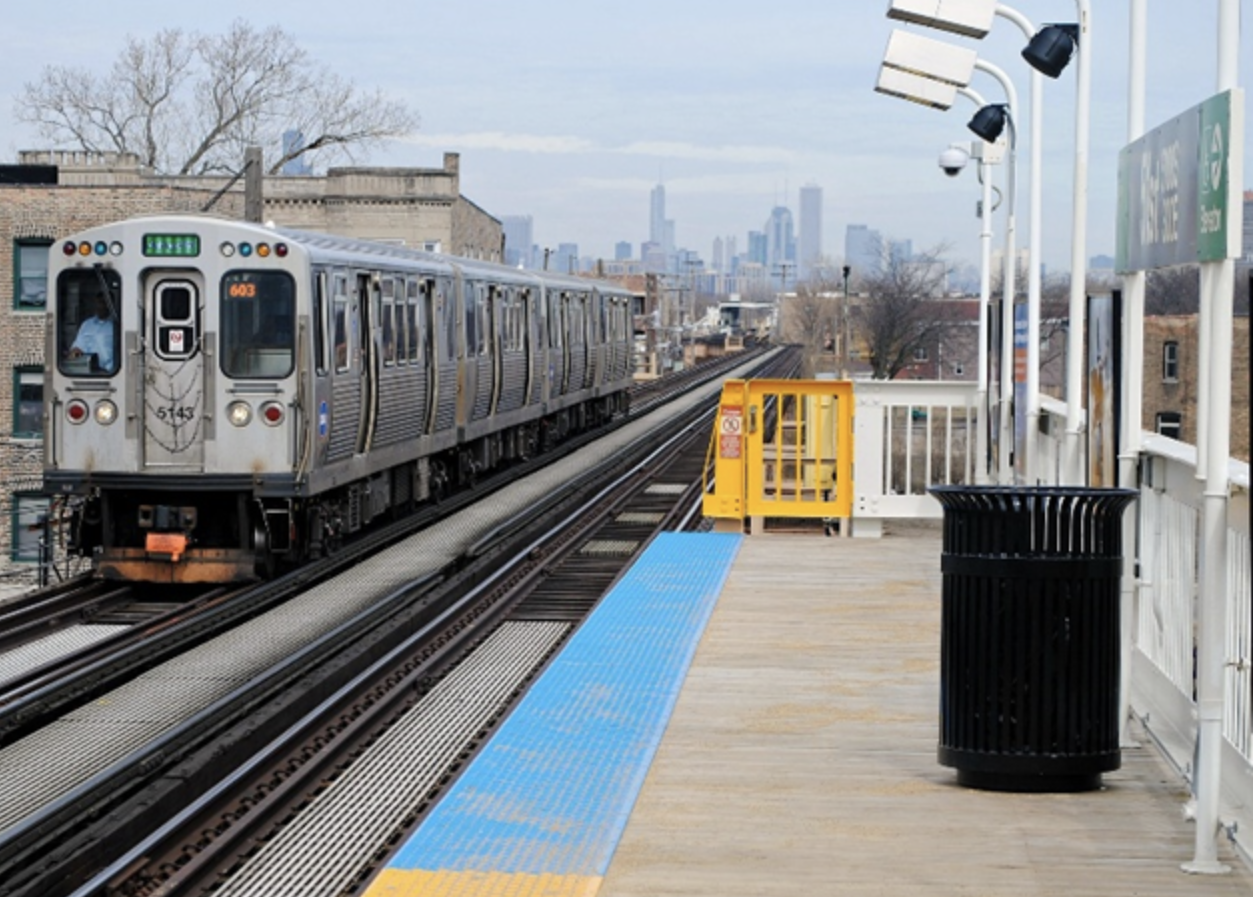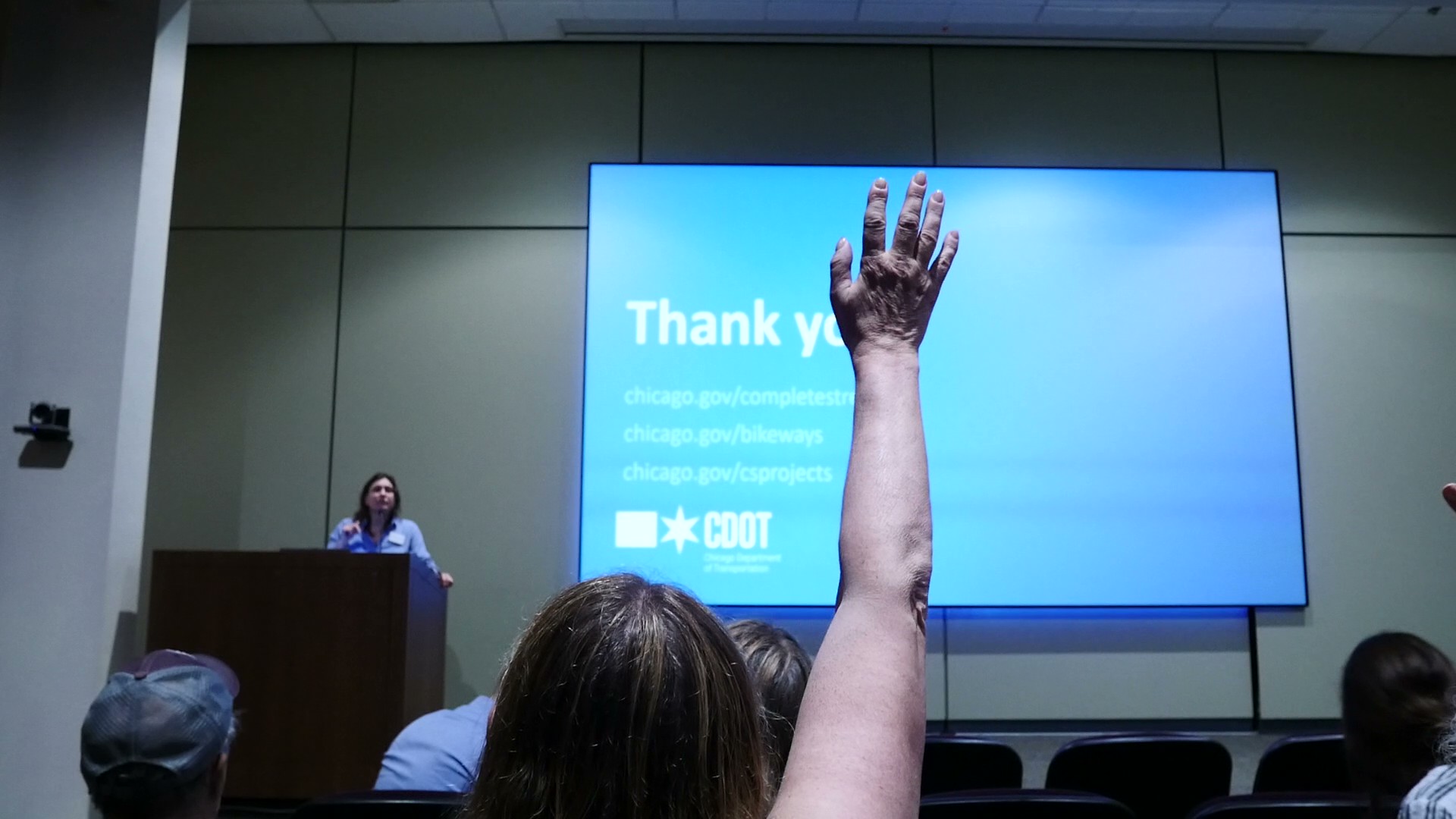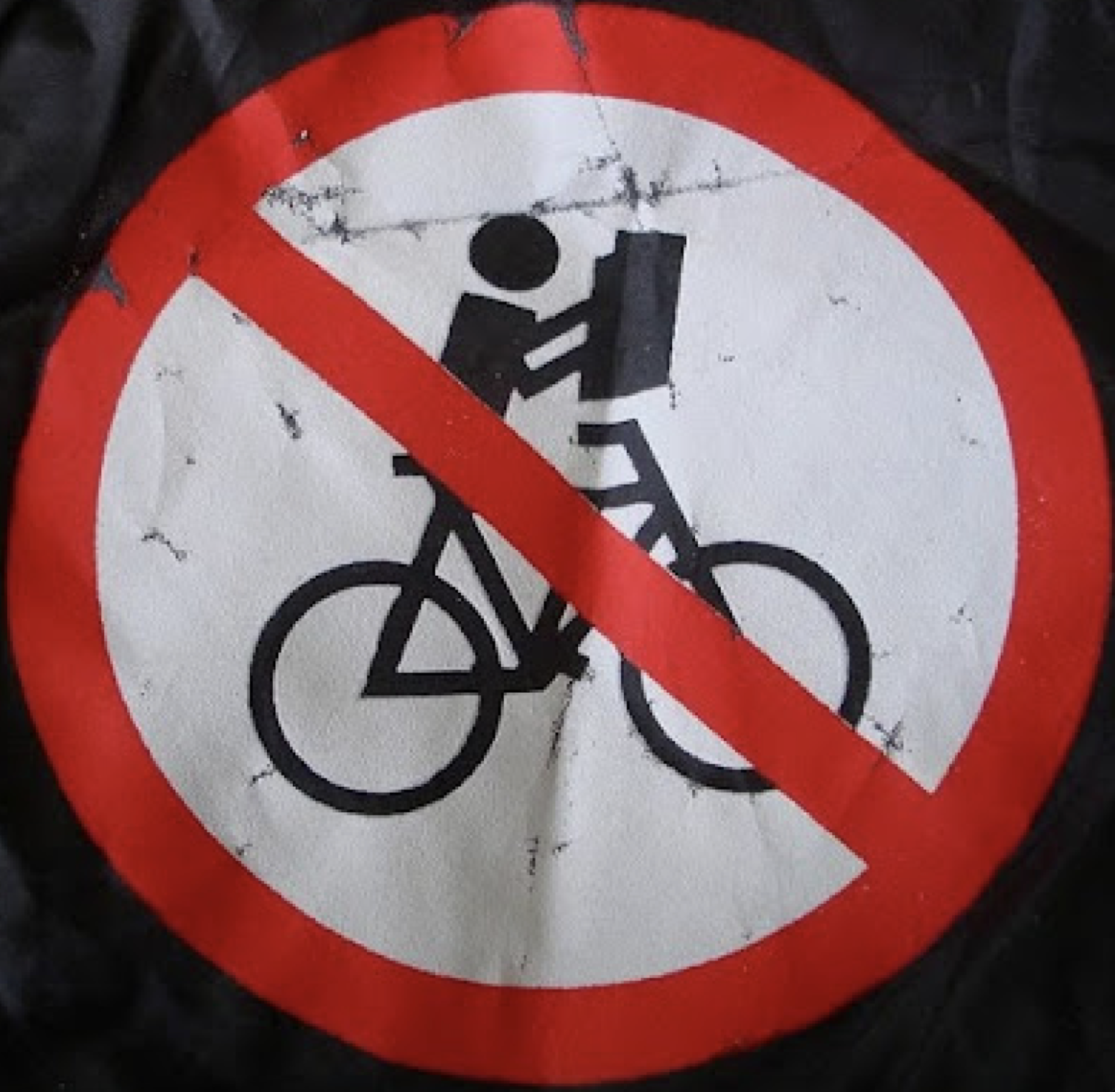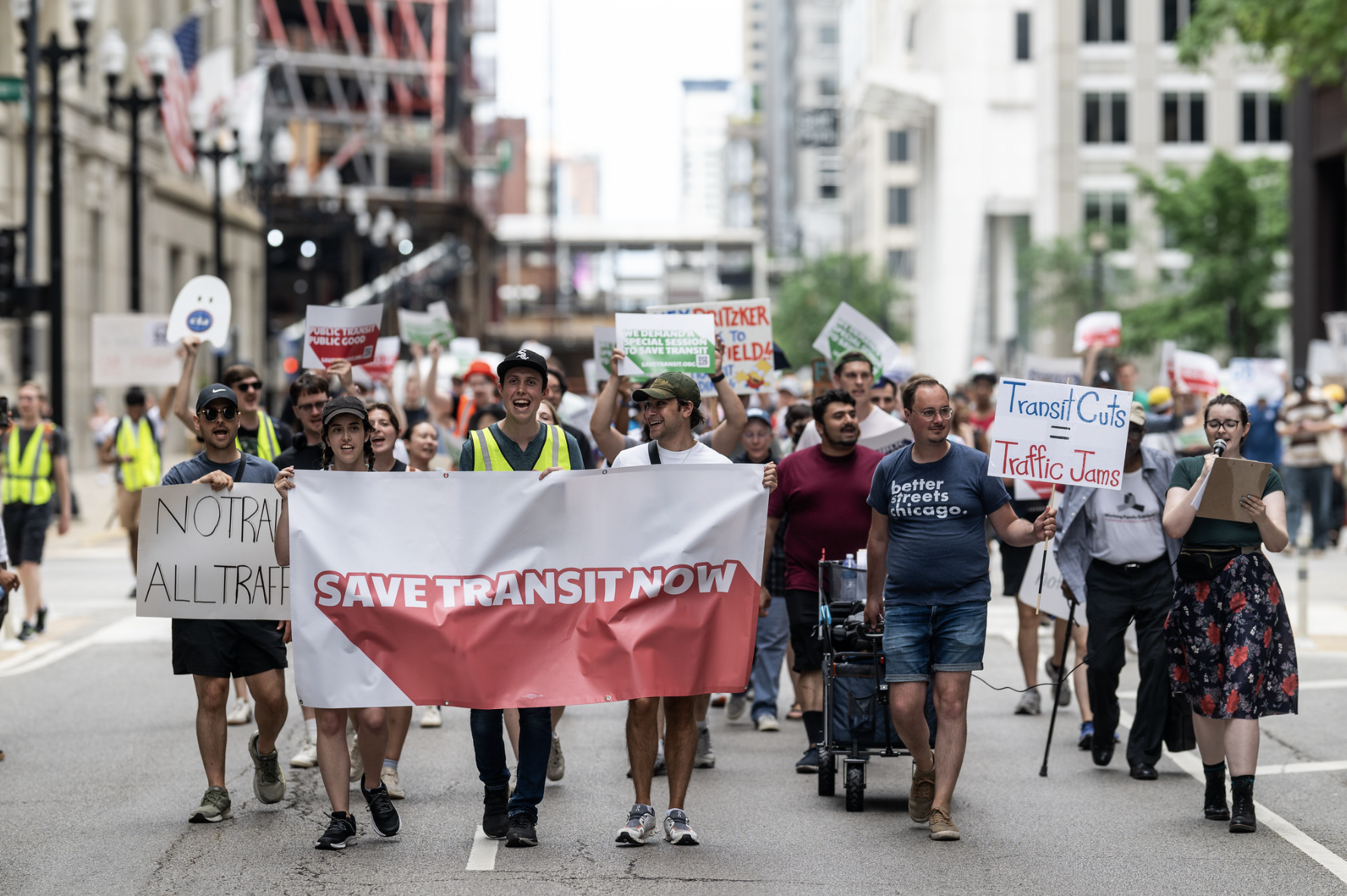As part of our 2023 Election Coverage, Streetsblog Chicago sent a questionnaire out to every candidate running for alderperson. Today, we’re sharing responses from candidates in South Lakefront and Mid South Side districts, including wards 4, 5, 16, and 20.
We asked about their plans to restore CTA ridership, what actions they would take to reduce fatal crashes, and if they supported additional protected bike lanes in their ward. We also asked if they supported more affordable housing options near transit, including Equitable Transit Oriented Development, and allowing Accessory Dwelling Units and three-flats to be built in every neighborhood. See the full set of questions at the bottom of this post.
You can see the full responses from candidates in every ward here.
Here are our writeups of the responses:
- Far South Side (Wards 6, 8, 9, 10 and 21)
- Near North and Northwest Side (Wards 1, 43, and 44)
- South Lakefront and Mid South Side (Wards 4, 5, 16, and 20)
- Mid North Side (Wards 33, 40, 46, and 47)
- West Side (Wards 24, 25, 26, 30 and 37)
- Far North Side (wards 48, 49, and 50)
- Southwest Side (wards 11, 12, 13, 15, 18, and 22)
- Northwest Side (wards 35, 36, 38, 39, and 45)
Ward 4: Downtown, Bronzeville, Oakland, Douglas and Kenwood

About the race: Chicago’s 4th Ward runs along the lake from Downtown to Kenwood. Incumbent alder Sophia King is vacating the seat to run for mayor, and 7 candidates are running. Streetsblog received responses from Paul Pearson, a doctoral candidate at DePaul, and Matthew “Khari” Humphries, who most recently served as the Mayor’s Director of Youth Policy. Also running are Prentice Butler, Lamont Robinson, Ebony Lucas, Tracey Bey, and Helen West. Block Club coverage can be found here.
CTA Ridership:
- Pearson suggested that the CTA add passenger assistants on each bus and train.
- Humphries wrote that “We don’t need leaders who propose quick-fixes as much as we need strategic solutions that strike at the heart of the problem.” He suggested a wide-ranging effort to understand rider needs and the perspectives of Chicagoans, to then inform a redesign of the network. He also proposed one-on-one engagement with administrative staff “to address long-standing issues that impede progress.”
Traffic Safety: Both candidates endorsed additional protected bike lanes in the ward.
- Pearson proposed more education for drivers to address road safety generally. He also noted the importance of safe paths for families to access parks and lakefront in the Ward, as important tools to build community and reduce traffic. In particular, he suggested Cottage Grove and Lake Park as protected bike lane options.
- Humphries mentioned the fear he feels biking in the ward with his young sons. He suggested using aldermanic menu money and partnering with the Chicago Department of Transportation and Mayor’s Office for People with Disabilities to design road diets on major arterials in the ward. While he didn’t name specific streets, he promised to solicit input from residents and cyclists and proposed major arterials, connections to the lakefront, and efforts to link bike lanes with adjacent wards.
Equitable Transit Oriented Development:
- Pearson noted that public transportation “sustains livelihood” in the Ward, and that rising costs are pushing families out of homes that they have lived in for generations. In addition to ETOD investments, he proposed a reparations fund to close housing insecurity gaps.
- Humphries agreed that ETOD efforts merited more support. He said he’d work with advocates citywide to identify opportunities and prioritize rehab opportunities rather than new construction to control costs.
Accessory Dwelling Units and Legalizing Three-Flats:
- Pearson expressed support for expanding the ADU pilot citywide and wrote that the ward currently has residents living in garages today—and in addition to expanding housing options, legalization would make it easier to ensure current dwellings are safe. He also endorsed legalizing 2 and 3-flats and proposed additional city services to help Black and Hispanic residents construct 2 and 3-flats in their communities.
- Humphries also backed the ADU expansion and three-flat legalization. In addition, he wrote that he previously worked with an affordable housing provider and suggested the Chicago Housing Authority could increase its supply of available units by utilizing vacant properties and purchasing additional buildings. He pointed to the strong credit rating of the CHA as evidence the agency could do more to address the city’s affordable housing shortage and suggested that a focus on rehabs and a partnership with the Cook County Land Bank Authority could help minimize costs.
Ward 5: Hyde Park, Woodlawn, and South Shore

About the race: Chicago’s 5th Ward covers portions of Hyde Park, Woodlawn, and South Shore. 11 candidates are running to replace retiring alder Leslie Hairston. Streetsblog received responses from Jocelyn Hare, Kris Levy, Martina “Tina” Hone, Robert Palmer, and Desmon Yancy. Also running are Marelene Fisher, Wallace Goode, Gabriel Piemonte, Dalika “Dee” Perkins, Joshua Gray, and Renita Q. Ward. Block Club coverage is here.
CTA Ridership: There were a wide range of answers on ways to rebuild CTA ridership.
- Hare suggested working with residents to understand their safety needs, and end ghost buses. She also suggested that routes and transport times must be easily available, and that “CTA facilities must be clean, brightly lit, staffed, and have bathroom access.”
- Levy proposed making stops brighter, shorter waiting times, and schedule adherence. He also proposed better technology, and to “share better rider practices” to encourage riders to do things like sit near aisles, avoid doors, and not wear expensive jewelry.
- Hone raised the possibility that ridership may never recover, but also offered a detailed set of actions to address safety, cleanliness, and operator shortages. For safety, she proposed more operators on trains. To improve cleanliness, she suggested ensuring adequate garbage cans at stations, and doing more to serve unhoused residents, including potentially offering warming buses to provide alternatives for residents riding trains at night. To address worker shortages, she suggested more aggressive recruiting, efforts to rehire retirees, and eliminating the current system of awarding the least desirable routes to new hires. She also disputed CTA CEO Dorval Carter’s claim that he can’t afford to crack down on chronic absenteeism—arguing that failing to do so hurts morale and encourages absenteeism by other workers. Finally, she also noted how hard the job has been for operators over the last few years, and suggested a public service campaign to promote better treatment of operators.
- Palmer suggested fare cuts, trained violence operators, and to have police officers ride trains more often.
- Yancy wrote that ridership may not fully recover, but that “as a CTA passenger and South Sider, I know that many of my community members have not had the luxury of abstaining from public transportation.” He didn’t make any specific suggestions, but proposed to analyze the problems facing the CTA and improve reliability, transparency and safety.
Traffic Safety: Candidates universally endorsed more physical protection for pedestrians and cyclists but differed on the level of specifics provided.
- Hare endorsed lowering speed limits and adding speed bumps, as well to “ensure streets, bike lanes, and sidewalks are paved and well-lit at all hours.”
- Levy proposed increasing bike and walking paths, as well as determining if more stop lights or yield signs are required.
- Hone started by noting the uptick in reckless driving. She called for better police enforcement of traffic laws, but also noted that officers also need to abide by traffic laws, writing that “I have never seen a CPD SUV stay at a stop light.” She also expressed support for bump-outs and protected bike lanes, with the caveat that they come with community consultation and approval. In particular, she flagged Stony Island as an especially dangerous street for pedestrians.
- Palmer expressed support for additional bike lanes, and better enforcement of rules against parking in existing lanes.
- Yancy agreed that more needed to be done and said that he would work with CDOT to “advocate and fight for the presence and accessibility of clearly marked bike lanes and sidewalks that are protected from the main areas of motorized traffic.”
Bike Lanes: Candidates were unanimous in their support for more bike lanes, and most suggested 71st and Jeffrey Avenue as good options.
- Hare wrote that protected bike lanes were “essential” but pointed to the Obama Presidential Center construction and traffic issues as a reason to hold off on making specific recommendations until a traffic impact study could be done
- Levy proposed Jeffrey Avenue, Stony Island Avenue, and 71st Street
- Hone noted the importance of community engagement, and that it was necessary to “normalize” the value of bike lines across the ward. She suggested lanes for Lake Park and Stony Island, 63rd Street, South Shore Drive, Jeffrey Ave, as well as potential lanes on 72nd Street and South Chicago Avenue. She worried that 71st was too narrow and would be complicated given the presence of the Metra on the Street.
- Palmer endorsed more bike lanes and suggested 71st Street as an option.
- Yancy noted the impact of transportation disinvestment in the ward, which has left South Side residents with limited transportation options. He also expressed support for lanes on 71st Street and Jeffrey Boulevard
Equitable Transit Oriented Development: ETOD received strong support from most candidates, while Yancy provided a more qualified response.
- Hare wrote that “TOD is a proven economic development mechanism to increase density, improve urban commuting, and build housing that meets the needs of today's residents,” and committed to work across the Ward to support ETOD investments.
- Levy expressed support for “more multi-use properties near transit.”
- Hone called out the importance of Metra to the ward, and that funding also needed to be available for redevelopment of existing storefronts. She noted the importance of a balance of affordable and market rate housing, and the necessity to support a healthy retail base.
- Palmer endorsed zoning changes to aid in ETOD developments.
- Yancy hedged a bit, endorsing ETOD “when it is done so transparently and in partnership with community members.”
Accessory Dwelling Units and Two- and Three-Flat Legalization: All candidates endorsed expanding the ADU ordinance, and all candidates except Levy and Hone provided unqualified support for legalizing Two- and Three-flats.
- Hare wrote “strongly support” for both questions. More broadly, she pointed to her work to address housing concerns stemming from the Obama Presidential Center, surveying residents to understand their needs. She also expressed support for “the housing policy recommendations of the South Shore Compact, Woodlawn East Community and Neighbors (WECAN), and the Washington Park Residents’ Advocacy Coalition.”
- Levy was a yes for the ADU expansion but wrote that his support for 2- and 3- flats was “pending neighborhood approval.”
- Hone was a yes on ADUs but raised concerns that most parts of the ward have small yards, and that she worried about “the increase in density in an already dense ward.” She suggested the best approach to increasing affordable housing was to target investors siting on blighted properties waiting for prices to rise. Her answer was more ambiguous on 2- and 3-flats, where she wrote that “The 5th Ward is filled with 2 and 3 flats,” but raised concerns about absentee landlords and investors. She proposed a program to help residents acquire 2 and 3-flats to build wealth and support community stability.
- Palmer was a “Yes” on both questions, and suggested housing and employment set-asides be provided by the Obama Foundation for South Shore.
- Yancy endorsed expanding the ADU ordinance and legalizing 2- and 3-flats. He also argued that “the city should not solely rely on everyday people to fill in the housing affordability gap.” He also endorsed a more city-provided affordable housing, an increase in the minimum wage, an expanded universal basic income, and the Bring Chicago Home ordinance.
Ward 16: West Englewood, New City and Chicago Lawn
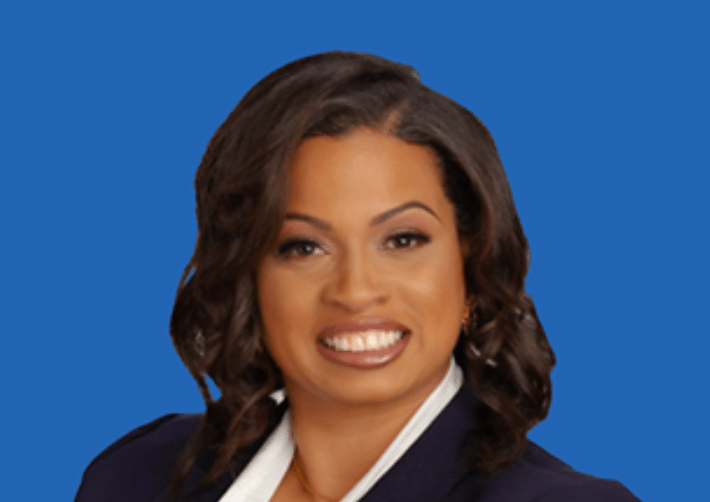
About the Ward: Chicago’s 16th Ward covers portions of West Englewood, Chicago Lawn and Back of the Yards. Three candidates are running here. Streetsblog received a response from Dr. Carolynn Crump, a Chicago Police Officer. Also running are incumbent Alder Stephanie Coleman, and Eddie Johnson. Block Club coverage can be found here.
CTA Ridership: Pointing to the Fair Transit South Cook Pilot, which cut Metra fares in South Cook County, Dr. Crump she suggested fare reductions for CTA ridership in low-income parts of the city. She also noted that the CTA needed to get rid of “ghost buses” and ensure real-time transit data is available on Ventra, the Transit App, as well as Google and Apple maps. She also noted the agency needs to accelerate hiring.
Traffic Safety: Dr. Crump wrote that new technology could be part of the puzzle to protect cyclists and pedestrians, including roadside detection, and side guards to protect vulnerable road users. She committed to incentive safety upgrades by manufacturers if elected, as well as ensure City vehicles are upgraded with modern safety equipment to protect other road users. She also endorsed greater road safety training, redesigning hazardous intersections, and additional protected bike lanes in the 16th Ward.
Equitable Transit Oriented Development: She expressed support for additional residential development near transit, noting that “public transit provides one of the best means for households to save money and help sustain a carbon-neutral environment.” She also observed that development near transit can help reduce traffic and parking headaches.
Housing: Dr. Crump had a detailed set of answers on housing. She endorsed expanding the ADU program and legalizing 3-flats citywide. She also laid out a range of policies to strengthen affordability and support the economic foundations of the ward. Those included dropping minimum lot sizes to reduce construction costs, and streamlining the rezoning of vacant non-residential buildings, to accelerate the redevelopment of closed churches and schools. She also suggested increasing density bonuses to encourage the provision of more affordable units, and down-payment assistance for low-income homebuyers. Finally, in a rare recognition that alderpersons govern the entire city rather than just their own wards, Crump also raised concerns about deterioration of commercial activity in the Loop, and the risks this posed for the city. If elected, she would work with business leaders to reduce vacancies, convert office buildings to other uses, and support the creation of affordable housing downtown.
Ward 20: Woodlawn, Hyde Park, Englewood, Fuller Park and Back of the Yards
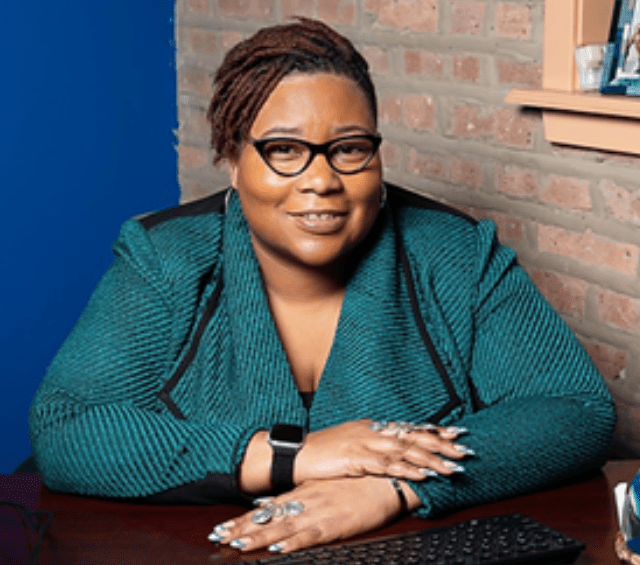
About the ward: Three candidates are running in the ward, which stretches from Back of the Yards to Woodlawn. Streetsblog received a response from incumbent Alder Jeanette Taylor. Also running are Jennifer Maddox and Andre Smith.
CTA Ridership: Taylor wrote that CTA leadership needs to be “more in touch” with riders and suggested quarterly meetings around the city to get feedback. She also suggested reaching out directly to solicit input from line-level CTA workers, since they’re the workers who interact with riders every day. Finally, she suggested direct funding for the CTA to address homeless individuals seeking shelter in CTA stations and trains and buses.
Traffic Safety: Taylor agreed that the city “must do more to protect cyclists and pedestrians,” but said that specifics would need to be determined in consultation with constituents, and that she would rely on the participatory budgeting process to determine the location of bike lanes. She did endorse clear markings for pedestrian crosswalks, and traffic calming measures based on street studies. She suggested “a combination of education and fines,” including public education campaigns to reduce distracted driving.
Housing: ETOD received strong support from Taylor, and she committed to continuing to push for additional affordable development near transit. She wrote that “I have a strong record of expanding affordable housing in my ward,” pointing to passage of the Woodlawn Housing ordinance. However, she declined to take a position on expanding the ADU pilot or legalizing 2- and 3-flats instead writing for both that “if my constituents are in support of it, yes I would.”
The Questions We Asked
We asked all candidates the following questions:
- CTA Ridership: The CTA has faced ongoing concerns about reliability and safety. Ridership still hasn’t recovered from the pandemic and ended 2022 at just 57 percent of 2019 levels. What actions would you take to improve CTA performance and ridership?
- Traffic Safety: In 2022, there were more than 31,000hit-and-run crashes in Chicago, and 31 pedestrians and 8 cyclists were killed on city streets. Do you believe the city should do more to protect pedestrians and cyclists? If so, what additional traffic safety measures would you support in your ward?
- Protected Bike Lanes: In 2022, the Chicago Department of Transportation added just 7 miles of protected bike lanes, falling short of its own goal. Do you believe Chicago should add more protected bike lanes, and if so, what streets in your ward would be good candidates?
- Equitable Transit-Oriented Development: Equitable Transit Oriented Developmentcan help ensure more Chicagoans can benefit from living near CTA stations and high-frequency bus lines. Do you believe more should be done to support development (including of affordable units) near transit in your ward? If so, what specific actions would you support?
- Accessory Dwelling Units: The City’s Additional Dwelling Unit (ADU) ordinanceallows homeowners to add a coach house, or backyard apartment to their property. This can help increase affordable housing options and reduce displacement, but the program is currently limited to five pilot areas. Do you support expanding the ADU ordinance citywide?
- Legalizing 3-Flats: 2- and 3-flats are Chicago’s most affordable housing stock. But in many neighborhoods near CTA and Metra stations, particularly on the North, Northwest and Southwest sides, 2 and 3-flats are illegal to build due to single-family zoning rules. Do you support legislation legalizing 2-and 3-flats citywide?
- Other: Please add any other positions you have on transportation or related housing issues that you think voters should know about.

Did you appreciate this article? Please consider making a tax-deductible donation to help fund Streetsblog Chicago's next year of publication. Thanks!
